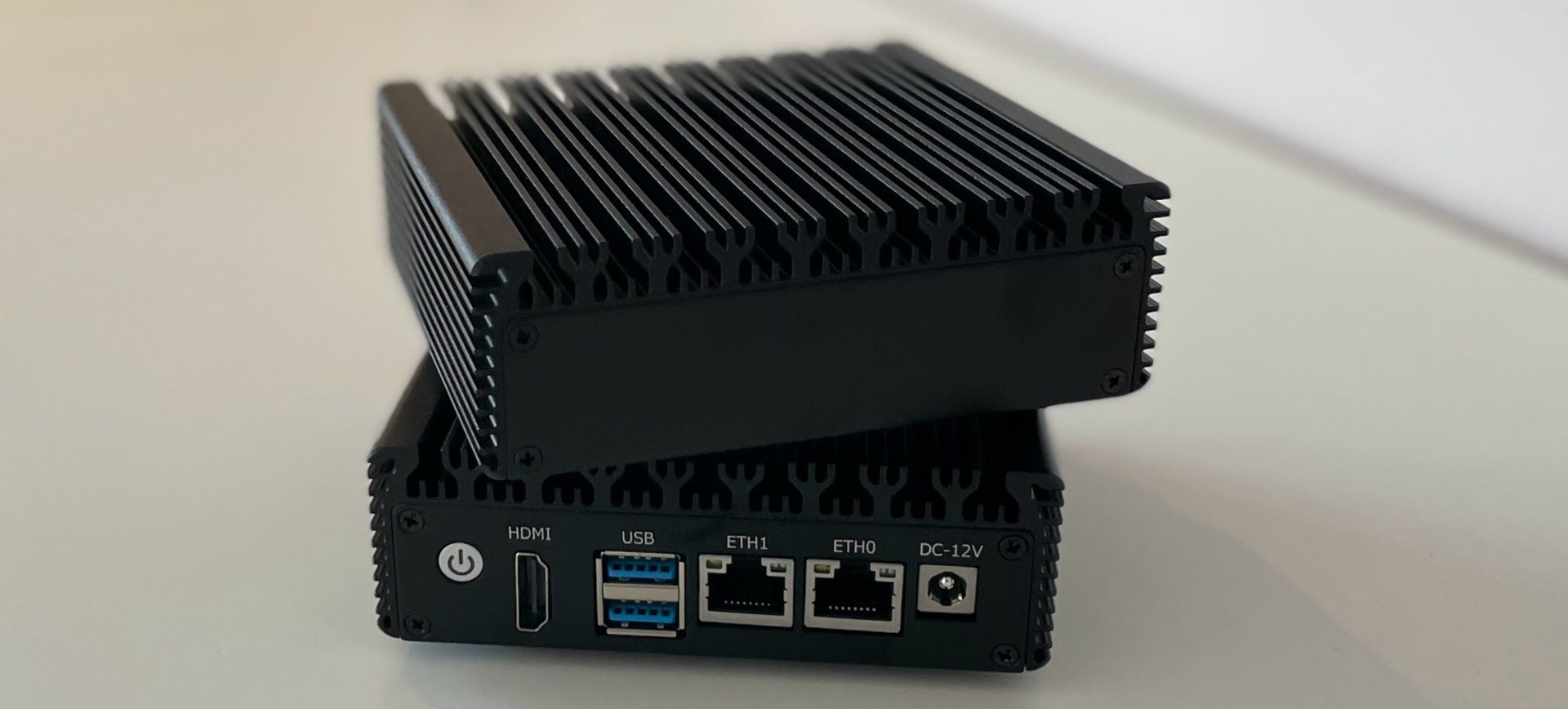No Pi, No Problem - Part 2: The X86-P1

Introduction
I've previously written about Raspberry Pi Alternatives and as it transpires, there are no shortages.
The X86-P1 caught my eye the other day on AliExpress (in itself a dangerous thing to idley browse), so I bought two to see what's what...
The X86-P1
The P1 is particularly interesting because it has no fan and is passively cooled via the case-come-heatsink.
It's also a 12V DC device with swappable RAM and an SSD.

While not a true "single board computer" it's close and due to the solid design and passive cooling it could be well suited to dirty and / or hostile environments.
I bought two configurations:
- N3050, DDR: 8GB, SSD: 128GB, UK
- N3160, DDR: 8GB, SSD: 128GB, UK
Both have 8GB Ram and an 128GB (mSATA) SSD along with a UK plug.
The only difference is the processor (and price).
N3050
The N3050 is a 1.6 Mhz processor that can burst up to 2.16 Mhz. It has 2 cores and 2 threads with a 2MB L2 Cache, and is based on a 14mm Braswell lithography.
N3160
The N3160 is a 1.6 Mhz processor that can burst up to 2.24 Mhz. It has 4 cores and 4 threads with a 2MB L2 Cache, and is based on a 14mm Braswell lithography.
There was less than £10 difference between the two, suggesting for the extra cores the N3160 is the better buy.

Hardware
Other than the CPU, Memory and SSD all covered above, the P1 has a HDMI port, 2 x USB 3 A ports, 2 x Gigabit Ethernet Ports and a 12V DC Jack.
Internally there is also a loosely documented GPIO header (10 pins, bottom right on the board, of the bottom left photo below) and a SATA port just above that.

There's also an RTC battery.
Pictures and Teardown




The assembly is as expected from the exploded diagram above. The CPU is on the mainboard and bonded to an extent with the top layer and fins, so I've not removed that to avoid compromising the thermal coupling and paste.
Applications
To my surprise (as it was unclear on the listing) the P1 comes with Windows 11 installed (which also means it has a TPM chip).
It is marketed as a "soft router" - presumably due to the dual ethernet ports.
Ubuntu runs well on it and is easy enough to install due to the conventional BIOS.
It is also likely as a result to run any mainstream x86 operating system that might run on any desktop device or server, including Home Assistant, RouterOS and pfSense amongst others.
Conclusion
This is an interesting device, it is comparable with many on the market however with no fan it is one of the few that could be considered dust-free and advantageous in certain applications.
While not a true "Single Board Computer" or SBC, the ability to change the RAM and SSD is appealing.
Price wise it is competitive with the Pi for the spec considering it comes with a case and storage, and the ability to supply power is arguably easier.
Idle it runs at 0.25 Amps which at 12 V means it draws only 3 watts!
